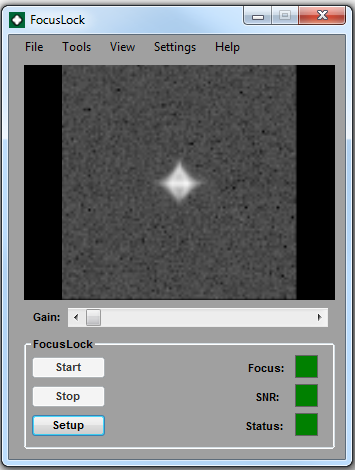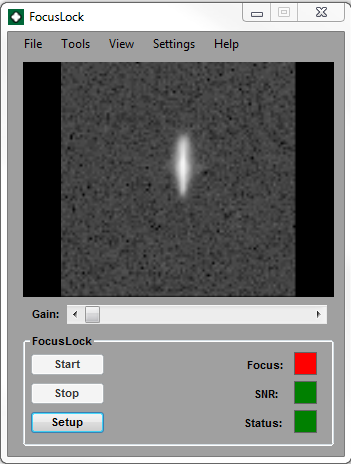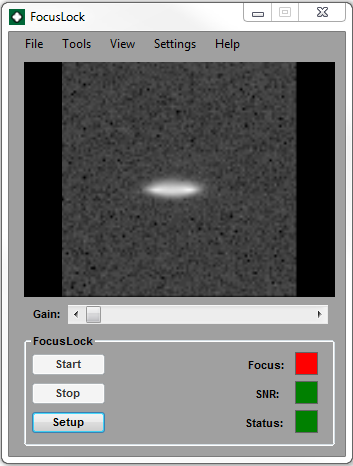
Theory
FocusLock uses astigmatic measurements to determine focus. The astigmatism is generated through the On Axis Guider (ONAG). The shape of the guide star seen through the ONAG® beam splitter is used to assess the focus position and to decide in which direction the focuser needs to be moved (in or out). The star roundness (RDN) is the key figure of merit. There are two types of RDN, the absolute ARDN and the relative RRDN. The former is always a positive number and it used for calibration purpose. The later is a signed number carrying directional information (+/-) and is used for the real time auto-focus operation. Both RDN values are expressed in percent. The ARDN is independent of the guider coordinate system versus the ONAG axes relationship (ONAG's body), or angle of rotation. In other words, any guider camera rotation does not change the ARDN value. On the other hand the RRDN is related to the actual guider camera rotation angle and must be calibrated for retrieving this angle. The following pictures show the guide star at 3 different focuser positions:

Guide star at best focus, ARDN = 0%, RRDN = 0%

Guide star outside of focus, ARDN = 50%, RRDN = +50%

Guide star inside of focus, ARDN = 50%, RRDN = -50%
In the above pictures the guider chip reference coordinate system is parallel to the ONAG one (squared with the ONAG's body), leading to a reference angle of zeros degrees. However this is just an example and it should be understood that is not a requirement, FocusLock after proper calibration, can handle any guider chip coordinate system rotation. However we recommend keeping both camera reference systems close to be parallel with the ONAG's body when possible to make things easier for reasoning.
This theory is from Innovations Foresight's SharpLock Documentation. See other resources for details.